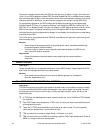
34 S-ICX (International) issued October 2000 S-ICX-50-200
Applications:
• Any company that experiences short, temporary periods of high traffic and needs to
ensure that calls are answered
• Backup support functions to cover void periods of the workday
DISA (DIRECT INWARD SYSTEM ACCESS)
Description:
Any number of exchange lines can be assigned to DISA lines which after being accessed, will
enable the incoming caller to dial any extension within the system. Or, if the proper security code
is entered, the caller will be able to access outside lines. Remote programming can also be done
over these lines after entering a password.
Benefits:
• Allows internal personnel to access the system without tying up the attendant or other
lines coming into the system.
• Enables people who are away from the office to access FX (Foreign Exchange),
Network, etc., to make long-distance calls using less expensive means.
Applications:
• Field sales people, repeat customers, etc.
DIRECTORY NUMBER
Description:
Directory Number (DN) allows extension numbers to be used on a key basis. The same DN may
be assigned to multiple keys on the same telephone and to keys on other telephones. There are
two types of DNs.
• Primary Directory Number(PDN): A telephone’s extension number is assigned to a
key on the same telephone. Up to three appearances of the PDN may be assigned to
keys on a key telephone.
• Non-Primary Directory Number (NPDN): A DN is assigned to an FF key on another
telephone. Up to three NPDN appearances of the same DN may be assigned to keys
on a telephone.
• Phantom Non-Primary Directory Number (PNPDN): PNPDNs are assigned to a
card position that is not installed in the system. As a result, this enhancement
expands the NPDN system by allowing the user to assign multiple extension
numbers to a single telephone without the need for additional hardware.
A telephone may only have one PDN (on up to three keys) but may have multiple NPDNs with up
to three appearances of any one NPDN.
Benefits:
• Maximum four extension incoming call can be handled.
• A PNPDN can be assigned as a 2nd DN key to separate private calls from other
types of calls.
• Handling calls is easier because DN calls can be transferred by pressing one key.
DISTINCTIVE RINGING
Description:
Individual exchange lines and stations can have their own unique ring pattern and frequency for
incoming calls, to distinguish them from other lines or phones. If no distinctive ringing is
assigned, the exchange line’s ring pattern will be heard.


















